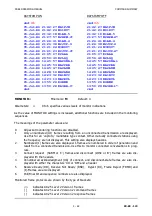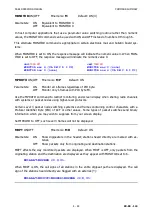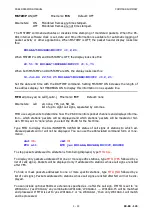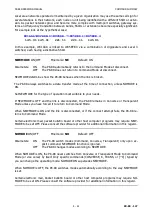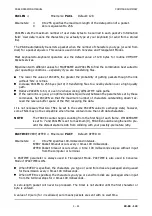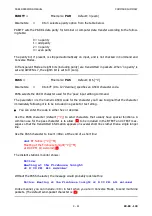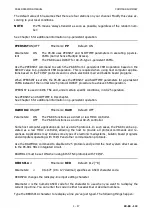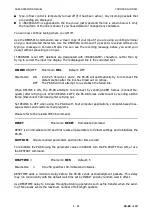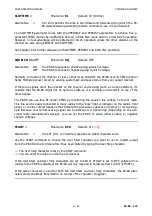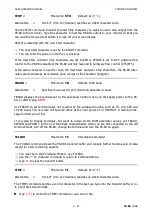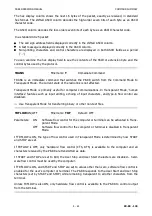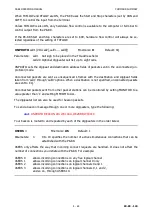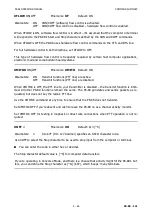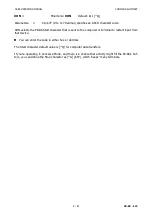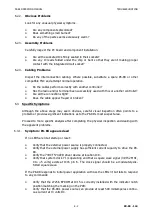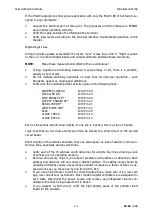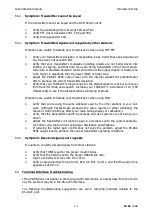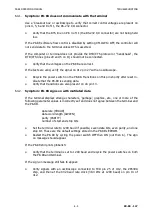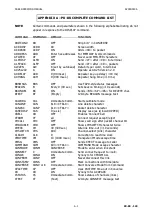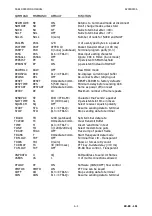
PK-88 OPERATING MANUAL
COMMAND SUMMARY
5 - 61
PK-88 - 136
STOP
n
Mnemonic:
STO
Default: $13
[^S]
Parameters:
n
0 to $7F (0 to 127 decimal) specifies an ASCII character code.
Use the STOP command to select the User Stop character you want to use to stop output from the
PK-88 to the terminal. Type this character to halt the PK-88's output to your monitor so that you
can read the received text before it scrolls off your screen display.
Output is restarted with the User Start character.
⇒
The User Start character is set by the START command.
⇒
You can enter the value in either hex or decimal.
If the User Start and User Stop characters are set to $00 or XFLOW is set to OFF, software flow
control to the PK-88 is disabled; the PK-88 will only respond to hardware flow control (CTS/RTS).
If the same character is used for both the User Start and User Stop characters, the PK-88 alter-
nately starts and stops transmission upon receipt of the character ('toggles').
TBAUD
n
Mnemonic:
TB
Default: 1200 baud
Parameters:
n
Specifies the serial 1/0 port (terminal) data rate in baud.
TBAUD displays the baud rate set by the autobaud routine when you first apply power to the PK-
88, or after typing
RESET
.
Use TBAUD to set terminal rates not covered by the autobaud routine, such as 75, 110, 600 and
19,200 baud. The new rate will become active at the next power-on or RESTART. A warning mes-
sage reminds you of this.
If you plan to change terminals, but want to retain all the RAM parameter values, set TBAUD,
AWLEN and PARITY to the new terminal's characteristics while you are still connected to the old
terminal. Next, turn off the PK-88, change the terminal and turn the PK-88 on again.
TCLEAR
Mnemonic:
TC
Immediate Command
The TCLEAR command clears the PK-88's transmit buffer and cancels further transmission of data
except for a few remaining packets.
⇒
You must be in the Command Mode to use TCLEAR.
⇒
Use the <^C> (default) command to return to Command Mode.
⇒
Type
TC
to clear the transmit buffer.
TIME
n
Mnemonic:
TI
Default: $14 [^T]
Parameters:
n
0 to $7F (0 to 127 decimal) specifies an ASCII character code.
The TIME command specifies a control character in the text you type into the transmit buffer or in-
to a text file stored on disk.
Type
[^T]
to embed the TIME command in your text or file.


